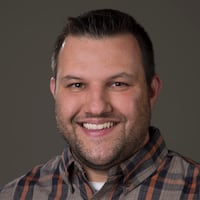With six scholarship running backs (Master Teague III, Marcus Crowley, Steele Chambers, Miyan Williams, TreVeyeon Henderson and Evan Pryor) on hand this spring, the topic inevitably came up again this week when Alford spoke with reporters.
It might not be Shakespeare, but it can be dramatic.
The veteran coach seemed a little irked by the implication rotating backs has not worked out during his time in Columbus, but he took it in stride.
“I say this all the time,” Alford replied. “I said it last year. I said two years ago. I said it three years ago. I said it my entire career and I’m gonna say it again: We’re gonna do whatever we need to do to win games. And some people might say the two-back system or thing hasn’t worked — at the end of the day we’re here to win games. And we say it hasn’t worked, well, we won a lot of games around here. We haven’t won the big one like we want to in the past two years. Now was that attributed because we played two backs or one back? That’s debatable, but we’re going to do whatever we need to do to win games, and if it’s one guy — a bell cow as we like to say — then it shall be, and if it’s not then it’s fine.”
Later in the same interview, Alford acknowledged being the No. 1 back as a player at Colorado State in 1989 did have its advantages for him, but he also pointed out offenses have changed in the past 30 years since he was a 1,000-yard rusher for Earle Bruce (who ironically was a Woody Hayes disciple and former Ohio State head coach who shared his mentor’s love for the running game).
Provided he didn’t fumble, Alford could be confident he would get plenty of opportunities every Saturday.
“I knew that, ‘Hey, I’m fine here’ because three-yard carry, three-yard carry doesn’t mean I’m going to get yanked out,” Alford said. “And guess what? I’m going back in there next series, too. You know, it took its toll on your body a little bit, but it is what it is and you’re competitive guy so you like that.
“But, yeah I think being able to get into that routine was good just for the mental mental makeup of it, so I understand that.”
A look at the numbers at Ohio State since the end of Alford’s playing career at Colorado State shows the Buckeyes have been more successful as a team when they have a running back who gets the majority of the carries.
While many factors go into how successful a team is — including the other players on offense and the quality of the defense, among others — 12 of the 15 Ohio State teams to win at least a share of the Big Ten championship since 1991 had a primary back.
Ohio State had a “bell-cow back” in 19 of those 30 seasons and won a championship 12 times while only three of the 11 teams that did not have a No. 1 back could claim the conference crown.
That means 80 percent of the champs had a bell-cow back even though the Buckeyes had one less than 65 percent of the time.
However, Alford has more recent history on his side: Two of the three Big Ten title teams without one back getting the majority of the carries occurred in the past three seasons, including 2020.
Alford conceded the Buckeyes have not achieved their ultimate goal of winning the national championship since he arrived, and in that case the historic trend even more favors Ohio State having a bell-cow back.
Of the eight Buckeye national champions, all but one had a clear No. 1 ball-carrier.
The exception is 1942 when Ohio State ran the single-wing and Gene Fekete, Paul Sarringhaus and Les Horvath all had more than 300 yards rushing.
Of course, correlation does not equal causation.
None of Ohio State’s national title teams made it to the summit primarily because of its running back, and lack of a bell-cow back likely was not the primary reason any of the other teams fell short.
While those trends are interesting, Alford has proven himself as a developer of successful running backs whether they are sharing the load or bearing the majority of it.
Ohio State had a 1,000-yard rusher in each of his first five seasons in Columbus, and Trey Sermon averaged more than 100 yards per game last year in a pandemic-shortened campaign in which he got fewer than 50 percent of the running back carries.
As for the present, Alford made the case sometimes the desire to name someone The Man in the backfield can be trumped by the development players need to make first.
“I think right now the biggest thing for us is to continue to grow as a football team, continue to grow as a unit and obviously continue to grow individually with those players to become the best version of themselves and the best players they can be,” Alford said. “And if that means that they emerge, that one of them or two of them emerge to kind of separate themselves from the pack then that shall happen. And in some regards, that may happen. Time will tell. Right now we’re just trying to get better every day and go from there.”
About the Author
